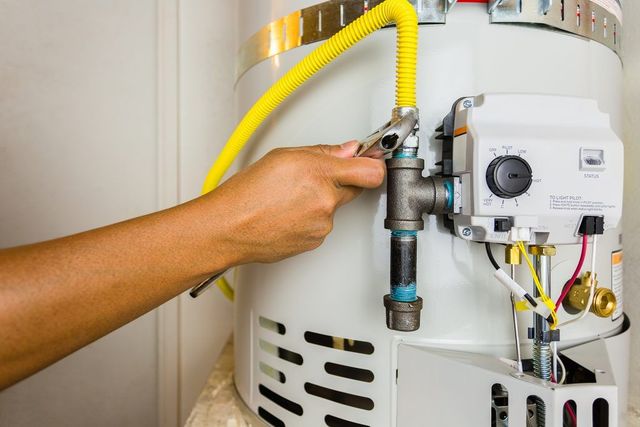Effective Techniques for Caring for Your Home's Hot Water SystemSpecialist Guidance for Caring for Your Home's Hot Water System
Effective Techniques for Caring for Your Home's Hot Water SystemSpecialist Guidance for Caring for Your Home's Hot Water System
Blog Article
This article following next relating to How to Maintain Your Water Heater & Prolong its Life is quite compelling. Don't miss out on it.

Warm water is essential for everyday convenience, whether it's for a refreshing shower or washing meals. To guarantee your warm water system runs efficiently and lasts longer, routine upkeep is essential. This short article provides practical tips and understandings on just how to keep your home's hot water system to prevent disturbances and costly repair services.
Intro
Keeping your home's hot water system may appear overwhelming, but with a few straightforward steps, you can guarantee it operates efficiently for years to find. This overview covers everything from understanding your warm water system to DIY maintenance ideas and recognizing when to contact specialist help.
Value of Keeping Your Hot Water System
Normal upkeep not only prolongs the life-span of your hot water system however additionally ensures it operates successfully. Neglecting upkeep can bring about decreased effectiveness, greater energy bills, and also early failing of the system.
Signs Your Hot Water System Requirements Upkeep
Recognizing when your hot water system needs interest can protect against major problems. Keep an eye out for indicators such as irregular water temperature, unusual noises from the heating unit, or rustic water.
Recognizing Your Hot Water System
Before diving into upkeep jobs, it's helpful to understand the basic parts of your warm water system. Commonly, this consists of the hot water heater itself, pipelines, anode rods, and temperature controls.
Monthly Maintenance Tasks
Regular monthly checks can assist catch small problems before they intensify.
Purging the Hot Water Heater
Purging your hot water heater gets rid of debris build-up, boosting effectiveness and prolonging its life.
Monitoring and Replacing Anode Rods
Anode rods stop rust inside the storage tank. Examining and changing them when worn out is essential.
Examining and Changing Temperature Settings
Adjusting the temperature settings makes certain optimum efficiency and security.
Do It Yourself Tips for Upkeep
You can carry out numerous maintenance tasks yourself to maintain your warm water system in top problem.
Looking for Leaks
Regularly evaluate pipes and connections for leakages, as these can result in water damages and higher expenses.
Evaluating Stress Relief Valves
Examining the pressure relief valve guarantees it functions appropriately and stops extreme pressure build-up.
Protecting Pipes
Shielding warm water pipes lowers warm loss and can save power.
When to Call a Specialist
While DIY maintenance is valuable, some issues call for expert expertise.
Complicated Concerns Needing Professional Assistance
Examples consist of major leakages, electrical issues, or if your hot water heater is constantly underperforming.
Routine Specialist Upkeep Perks
Specialist maintenance can consist of extensive inspections, tune-ups, and making sure conformity with safety requirements.
Verdict
Regular maintenance of your home's warm water system is important for performance, longevity, and price financial savings. By complying with these suggestions and knowing when to look for professional aid, you can make certain a trustworthy supply of hot water without unanticipated disruptions.
Water Heater Maintenance Tips
Test the TPR Valve
Shut off the power and the cold-water supply valve. Place a bucket under the pipe connected to the temperature-pressure-release (TPR) valve on the top or side of the tank. (This valve opens if the tank pressure gets too high.) Lift the valve’s tab to let some water out, then let go. If water keeps flowing, drain the tank partway, unscrew the old valve with a pipe wrench, and install a new one. Check the Anode Rod
Put a hose to the tank’s drain cock and let out a few gallons of water. Now fit a 1 1/16-inch socket onto the rod’s hex head on top of the heater (or under its top plate) and unscrew the rod. If it’s less than ½ inch thick or coated with calcium, buy a new one, wrap its threads with Teflon tape, put it back in the tank, and tighten securely. Use this segmented rod if headroom above the tank is limited. Drain the Tank and Wash Out Sediment
Drain the remaining water in the tank into the bucket, then stir up the sediment on the tank’s bottom by briefly opening the cold-water supply valve. Drain and repeat until clean water comes out of the hose. Close the drain cock, refill the tank, and turn its power back on. Adjust the Temperature
Find the temperature dial on the side of the tank and unscrew its cover. Adjust the dial to 120 degrees using a flathead screwdriver. For every 10 degrees the temperature is lowered, you can expect to save up to 5 percent in energy costs. Turn the water heater off or the thermostat down to its lowest setting if you plan to be away from home for more than three days. Insulate the Pipes
Buy some self-sticking 3/8-inch-thick foam pipe insulation that matches the pipes’ diameter. Slide the foam over the hot-and cold-water pipes as far as you can reach. Insulating the cold-water pipe prevents condensation in summer. Peel the tape and squeeze the insulation closed. If the pipe is 6 inches or less from the flue, cover it with 1-inch-thick unfaced fiberglass pipe wrap. https://www.thisoldhouse.com/plumbing/21016402/how-to-maintain-a-water-heater

Hopefully you enjoyed reading our piece about Tips For Maintaining Your Hot Water Heater. Thanks so much for taking the time to browse our article. If you liked our blog post plz make sure you remember to share it. We enjoy your readership.
Click Here Report this page